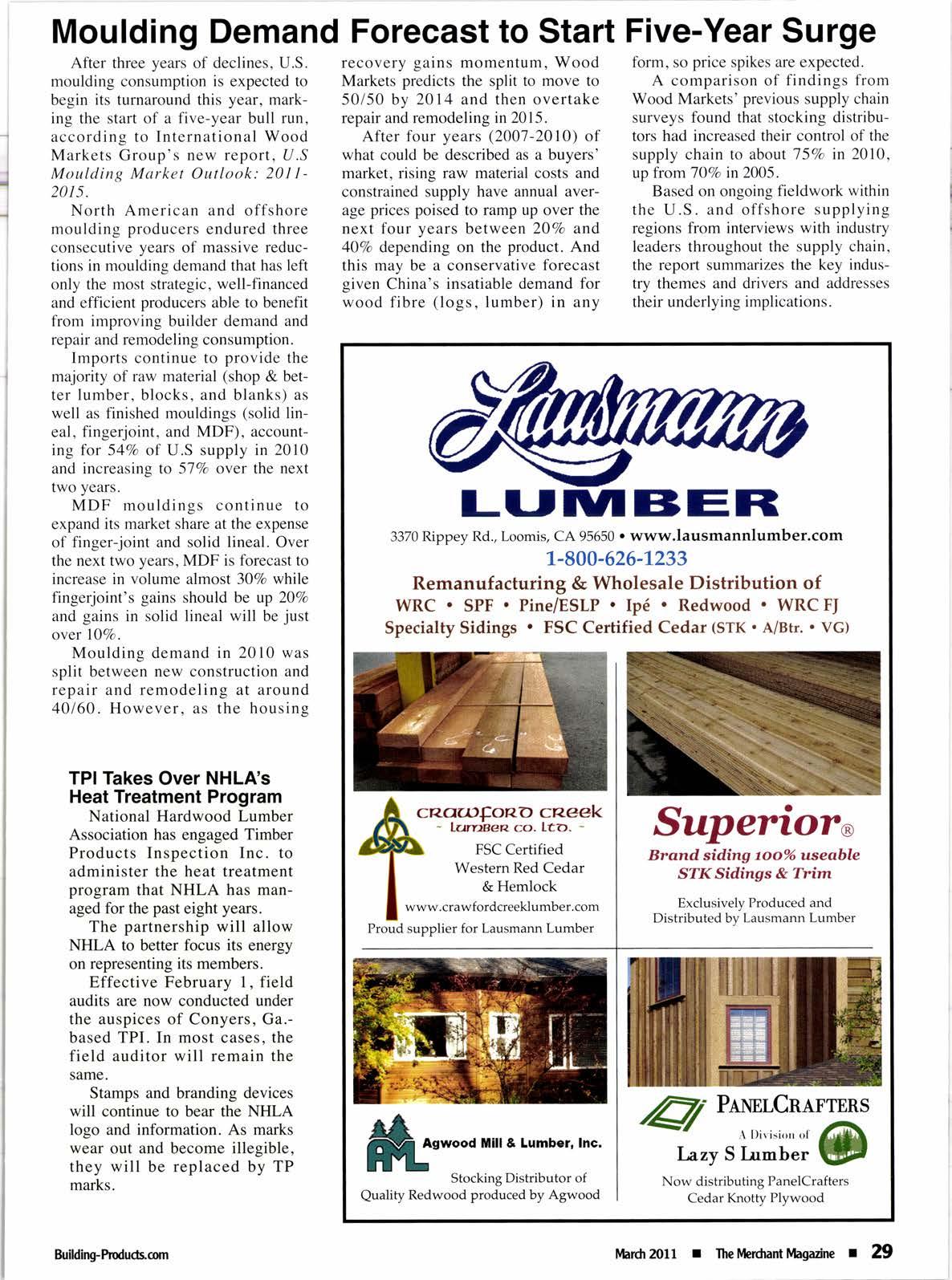
1 minute read
Moulding Demand Forecast to Start Five-Year Surge
After three years of declines, U.S. moulding consumption is expected to begin its turnaround this year, marking the start of a five-year bull run, according to International Wood Markets Group's new report, U.S Moulding Market Outlook: 201 I201 s.
North American and offshore moulding producers endured three consecutive years of massive reductions in moulding demand that has left only the most strategic, well-financed and efficient producers able to benefit from improving builder demand and repair and remodeling consumption.
Imports continue to provide the majority of raw material (shop & ber ter lumber, blocks, and blanks) as well as finished mouldings (solid lineal, fingerjoint, and MDF), accounting for 54Vo of U.S supply in 2010 and increasing to 57Eo over the next two years.
MDF mouldings continue to expand its market share at the expense of finger-joint and solid lineal. Over the next two years, MDF is forecast to increase in volume almost 3OVo while fingerjoint's gains should be up 20Vo and gains in solid lineal will be just over l0%o.
Moulding demand in 2010 was split between new construction and repair and remodeling at around 40160. However, as the housing
TPlTakes Over NHLA's Heat Treatment Program
National Hardwood Lumber Association has engaged Timber Products Inspection Inc. to administer the heat treatment program that NHLA has managed for the past eight years.
The partnership will allow NHLA to better focus its energy on representing its members.
Effective February l, field audits are now conducted under the auspices of Conyers, Ga.based TPI. In most cases, the field auditor will remain the same.
Stamps and branding devices will continue to bear the NHLA logo and information. As marks wear out and become illegible, they will be replaced by TP marks.
recovery gains momentum, Wood Markets predicts the split to move to 50/50 by 2014 and then overtake repair and remodeling in 2015
After four years (2007-2010) of what could be described as a buyers' market, rising raw material costs and constrained supply have annual average prices poised to ramp up over the next four years between 2OVo and 4OVo depending on the product. And this may be a conservative forecast given China's insatiable demand for wood fibre (logs, lumber) in any form, so price spikes are expected.
A comparison of findings from Wood Markets' previous supply chain surveys found that stocking distributors had increased their control of the supply chain to about 757o in 2010, up from TOVo in 2005.
Based on ongoing fieldwork within the U.S. and offshore supplying regions from interviews with industry leaders throughout the supply chain, the report summarizes the key industry themes and drivers and addresses their underlying implications.
By Ryan Unick, Starborn Industries










